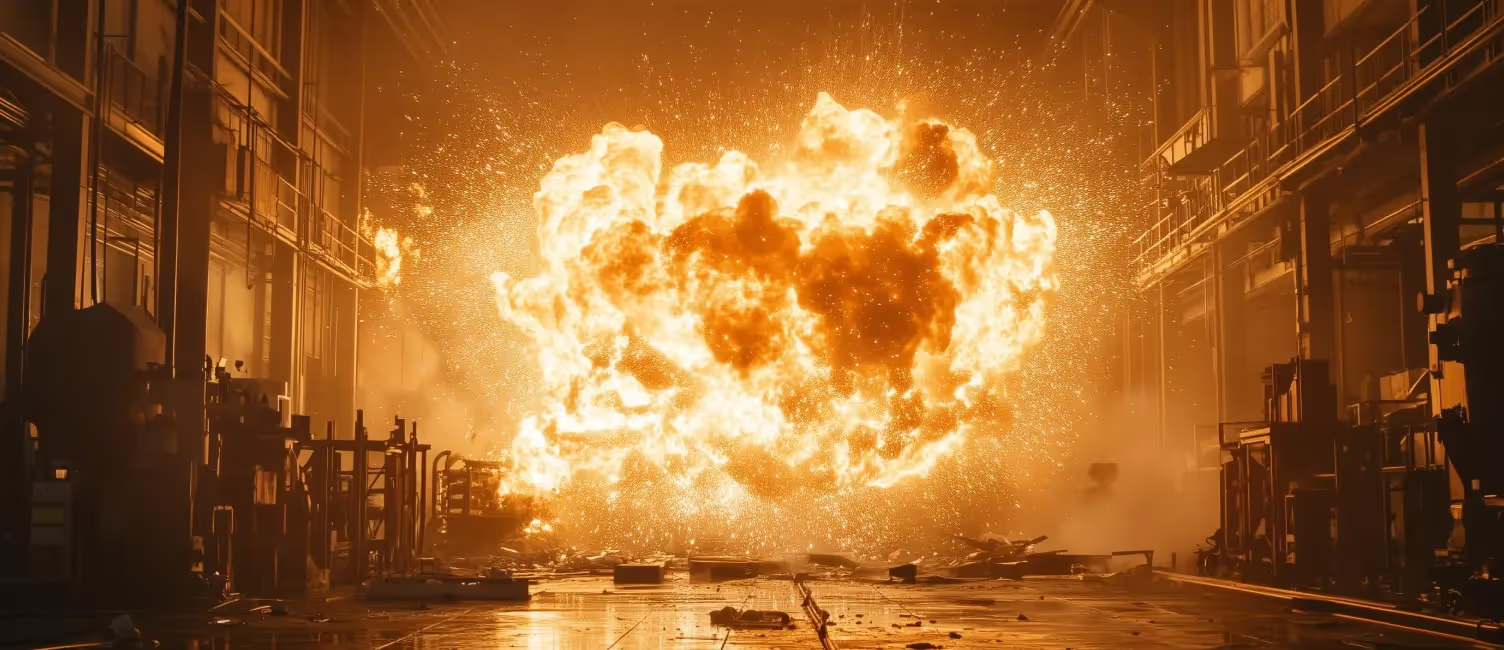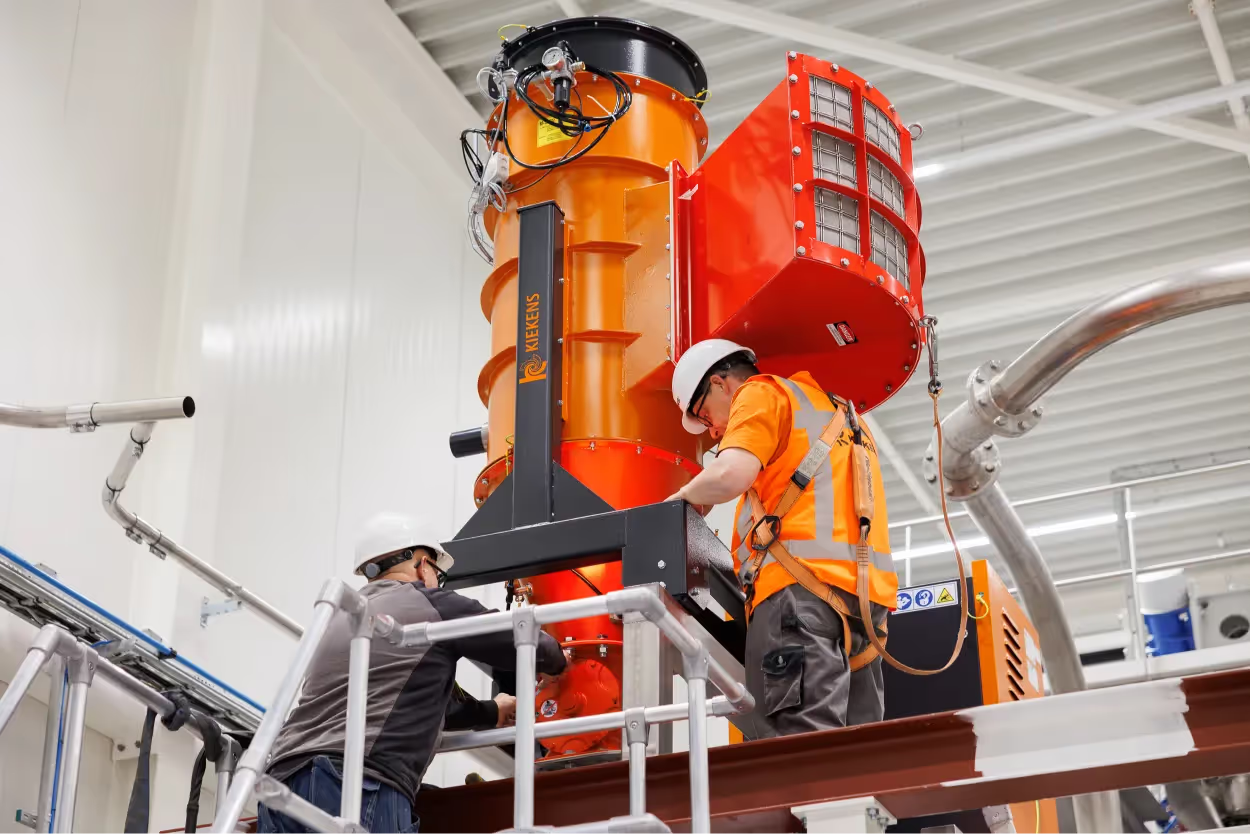The influence of volume flow and negative pressure on industrial extraction
.jpg)
What is volume flow?
The volumetric flow describes the amount of medium — such as air or gas — that flows through a given cross-section per unit of time. The usual units are cubic meter per hour (m³/h) whether per second (m³/s). In extraction technology, the volume flow represents the transport capacity of an installation. In other words: it shows how much air an installation can move within a certain period of time. This value depends directly on the diameter of the pipe, the flow rate and the negative pressure generated in the system.
The basic principles and application of negative pressure
The oppression describes a condition where the pressure in a closed system is lower than the ambient pressure. In extraction systems, negative pressure is used to specifically draw in air or other media. This is usually expressed in Pascal (Pa), millibar (mbar) whether Saloon. The rule is: the higher the negative pressure, the greater the suction power of an installation. In combination with the volume flow, it is created suction power — the performance parameter of each extraction system.
Relationship between volume flow, pressure, and flow rate
The volume flow (Q) is directly related to the tube cross-section (A) and the flow rate (c) of the medium. The formula:
Q = A × c
This means: a larger cross-section or a higher flow rate leads to a higher volume flow. Especially the internal diameter of the pipe has a great influence. Even minor changes have an effect on flow properties and pressure loss. That is why choosing the right piping system is crucial.
Unit and calculation: the formulas at a glance
The calculation of the volume flow is based on physical formulas. In addition to Q = A × c when it comes to gases, the density (ρ) an important role.
An example:
A pipe with a diameter of 0.05 m² and a flow rate of 10 m/s results in a volume flow of 1800 m³/h.
Q = 0.05 m² × 10 m/s = 0.5 m³/s = 1800 m³/h
When calculating negative pressure, the difference between ambient pressure and the pressure in the installation is decisive.
Volume flow vs. suction power — what's the difference?
Suction capacity is the combination of volume flow and negative pressure. It is not enough to only generate a high volume flow if the negative pressure is not strong enough to pull particles out of the air — or vice versa. The ideal coordination between the two values determines the success of an extraction system.
Terms at a glance:
- Volumetric flow: the amount of air that is moved through the system per unit of time. Determines how many and which particles the system can remove.
- Suppress: the pressure difference with the environment. Important for suction power. Shows how strongly air and particles are drawn in.
- Suction capacity: the result of volume flow × negative pressure. Show the actual performance of the extraction system.
Case study: volume flow in extraction systems
A correctly calculated volume flow ensures that dust, chips or gases are extracted as effectively as possible. One too low volume flow can cause harmful substances to be inadequately captured and spread in the workspace with risks to health, safety and product quality.
On the other hand, a too high volume flow, especially in combination with a lot of negative pressure, to unnecessary energy consumption, increased sound production and wear of filters, fans and other components. So it's not about getting the most out of it, but about to adapt correctly to the situation.
In doing so, account must be taken of:
- the tube diameter,
- the length and properties of the piping system,
- type of substance or gas,
- and the specific work environment.
Harriers supports you in mapping all these components and, based on that, develops a customized solution for stable and powerful extraction.
Common volume flows in practice
Good to know: The values below serve as an indication, but the exact airflow per extraction point cannot be calculated. Expert assessment and follow-up measurements are essential to determine whether the intended result is achieved.
Practical tip
Have the volume flow at the extraction points measured regularly. This is the only way to recognize bottlenecks in the system — for example due to pressure loss, clogged filters or incorrectly sized pipes.
Influence of the piping system
The piping system used has a major influence on the volume flow that actually arrives.
Factors that negatively affect the flow:
- long distances,
- lots of curves,
- too small diameter,
- wrong material.
An efficient system is characterised by:
- smooth interior walls,
- short and straight routes,
- optimally adjusted diameters.
Pressure loss and friction losses
Pressure loss occurs when air encounters resistance in the system. Every bend, pipe reduction, dirty filter or narrowing increases friction — and thus reduces the final volume of air and the negative pressure. This is directly at the expense of suction power.
Our recommendation:
- keep pipes as short and straight as possible,
- clean or replace filters regularly,
- maintain maintenance intervals.
The right balance — with Kiekens
A powerful extraction system requires a perfect balance between volume flow and negative pressure. Only when both quantities are tailored to your application does the system function safe and stable.
With more than 100 years of experience, Kiekens knows this connection like no other. Together with you, we will analyze all relevant parameters and develop a customized solution that suits your production environment.
With Kiekens, you benefit from:
- Individually tailored installation planning based on physical principles
- Maximum operational reliability thanks to accurate pressure and volume flow calculation
- Energy savings through optimal coordination and smart control
- Technical support, maintenance and personal advice by specialists
Get advice at eye level and discover, together with Kiekens, the ideal extraction solution for your company. For clean air and measurable efficiency.
With the formula Q = A × c, where A is the pipe cross-section, c is the flow rate and Q is the volume flow.
Volume flow is the amount of air per unit of time. Suction power is the combination of volume flow and negative pressure and indicates the actual performance of an extraction system.
Because negative pressure generates the force with which air and particles are drawn in. Without sufficient negative pressure, effective extraction does not take place.
Among others: the diameter of the pipe, the flow rate, the condition of the filters and the pressure difference in the system.




